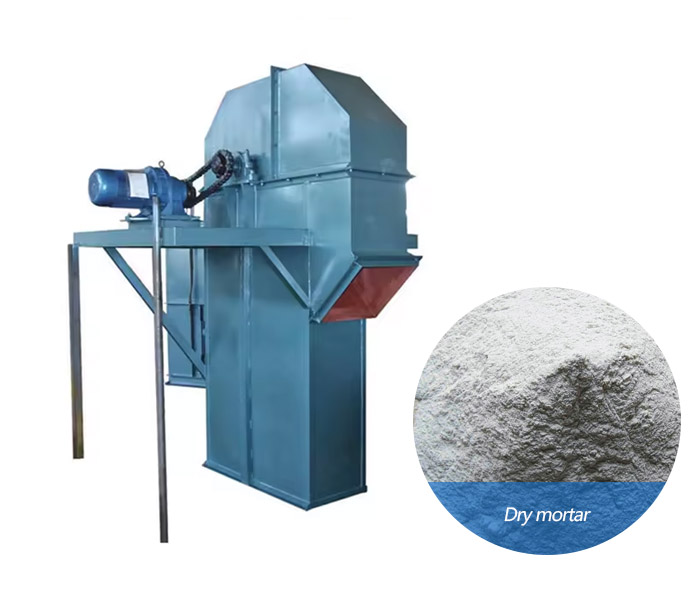
Dry Mortar Bucket Elevator
A mechanical equipment specially used for vertically conveying powdered and granular materials such as dry mortar.
| Lifting height | 40m |
| Conveying capacity | 10-100 t/h |
| Hopper width | 160-1600 mm, a variety of specifications are available. |
| Motor power | 5-50 kW. |
| Bucket Material | Options include carbon steel, stainless steel, or reinforced plastics for enhanced durability. |
What is the Dry Mortar Bucket Elevator?
A dry mortar bucket elevator is a vertical conveying system designed to lift dry mortar materials efficiently and safely. Equipped with durable buckets mounted on a continuous belt or chain, this system is ideal for transporting dry, powdery materials like cement, sand, and additives used in mortar production. Its enclosed design minimizes dust emission and ensures clean, efficient conveying.
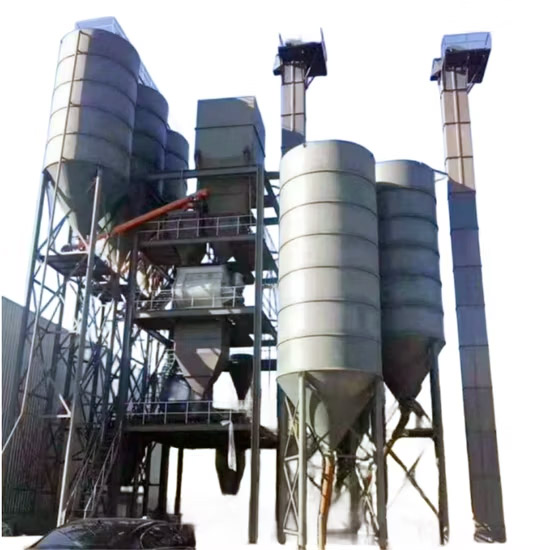
Why Choose a Bucket Elevator for Dry Mortar?
Efficient Vertical Conveying: Capable of lifting materials to significant heights with minimal space requirements.
Dust Control: Enclosed design prevents dust leaks, ensuring a cleaner working environment.
Material Integrity: Gentle bucket movement minimizes particle breakage, preserving mortar quality.
High Capacity: Able to transport large volumes per hour, improving production efficiency.
Durability: Resistant to wear and capable of handling abrasive materials commonly found in dry mortar mixtures.
What are the applications of Dry Mortar Bucket Elevator?
Construction Materials: Cement, gypsum, and sand lifting for mortar mixing.
Chemical Industry: For handling fine powders and additives in dry mortar formulas.
Building Materials Production: Feeding mortar into mixers or storage silos.

How does the Dry Mortar Bucket Elevator work?
The Dry Mortar Bucket Elevator drives the chain to rotate through the motor, so that the bucket circulates in the frame. During the lifting process, the dry mortar enters the bucket from the storage bucket, is lifted to the top with the chain, bypasses the top wheel and flips downward, and the material is poured into the receiving trough.
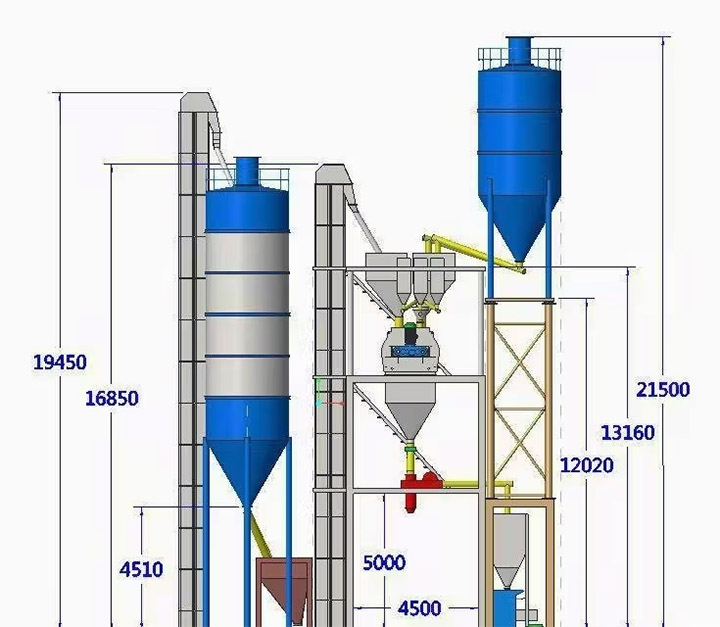
Dry Mortar Bucket Elevator Parameters
| Model | TD160 | TD250 | TD315 | TD400 | ||||||||||||
| Hopper type | Q | h | zD | Sd | Q | h | zD | Sd | Q | h | zD | Sd | Q | h | zD | Sd |
| Conveying volume (m3/h) | 5.4 | 9.6 | 9.6 | 16 | 12 | 22 | 23 | 35 | 17 | 30 | 25 | 40 | 24 | 46 | 41 | 66 |
| Bucket width (mm) | 160 | 250 | 315 | 400 | ||||||||||||
| Dou Rong (L) | 0.5 | 0.9 | 4.2 | 1.9 | 1.3 | 2.2 | 3.0 | 4.6 | 2 | 3.6 | 3.8 | 5.8 | 3.1 | 5.6 | 5.9 | 9.4 |
| Bucket distance (mm) | 280 | 350 | 360 | 450 | 400 | 500 | 480 | 560 | ||||||||
| Bandwidth (mm) | 200 | 300 | 400 | 500 | ||||||||||||
| Bucket speed (m/s) | 1.4 | 1.6 | 1.6 | 1.8 | ||||||||||||
| Material quantity (mm) | 25 | 35 | 45 | 55 | ||||||||||||
| Model | TD500 | TD630 | TD160 | TD250 | TD350 | TD450 | ||||||||||
| Hopper form | Q | h | zD | Sd | h | zD | Sd | Q | S | Q | S | Q | S | Q | S | |
| Conveying capacity (m3/h) | 38 | 70 | 58 | 92 | 85 | 89 | 142 | 4.7 | 8 | 18 | 22 | 25 | 42 | 50 | 72 | |
| Bucket width (mm) | 500 | 630 | 160 | 250 | 350 | 450 | ||||||||||
| Dou Rong (L) | 4.8 | 9 | 9.3 | 15 | 14 | 14.6 | 23.5 | 0.65 | 1.1 | 2.6 | 3.2 | 7 | 7.8 | 14.5 | 15 | |
| Bucket distance (mm) | 500 | 625 | 710 | 300 | 400 | 500 | 640 | |||||||||
| Bandwidth (mm) | 600 | 700 | 200 | 300 | 400 | 500 | ||||||||||
| Bucket speed (m/s) | 1.8 | 2 | 1 | 1.25 | 1.25 | 1.25 | ||||||||||
| Material quantity (mm) | 60 | 70 | 25 | 35 | 45 | 55 | ||||||||||
What are the structures of Dry Mortar Bucket Elevator?
Buckets: Designed for minimal spillage and smooth material flow.
Belt or Chain: Chosen based on material type, capacity, and lifting height.
Head Pulley & Boot Pulley: Drive and return pulleys to guide the belt or chain.
Enclosed Casing: Provides dust containment and improves operational safety.
Tensioning System: Ensures proper alignment and tension control to avoid slippage.
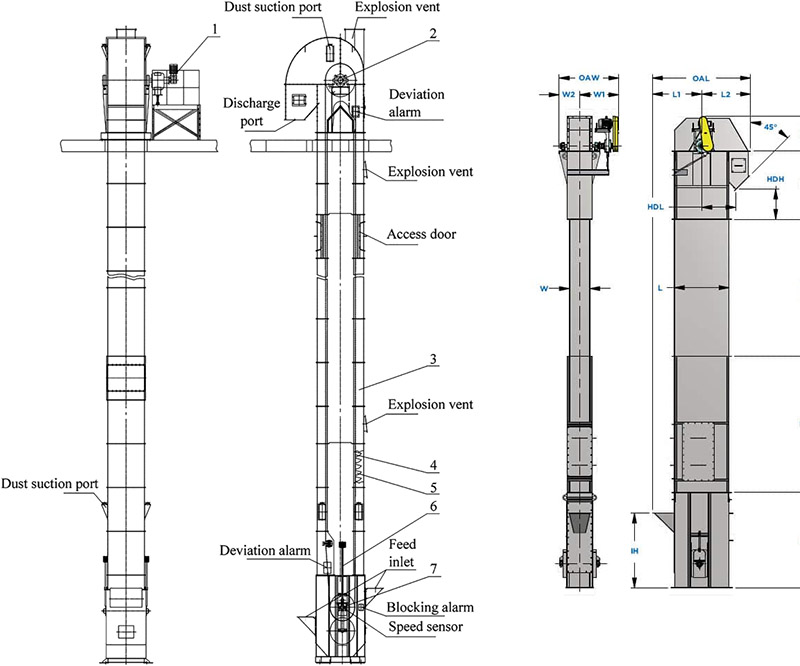
Dry Mortar Bucket Elevator customer case
| Application scenario | Lift height | Lift capacity | Features |
| A large dry mortar production plant, used to lift the mixed finished mortar to the packaging warehouse. | 15 meters | 30 tons/hour | The equipment runs stably, has good sealing, and no dust leakage. When used with an automatic packaging machine, the production efficiency is increased by 40%. |
| A building materials company's tile adhesive production line, used to lift dry mortar from the mixer to the buffer bin. | 10 meters | 20 tons/hour | Good wear resistance, adaptable to high-load operation, reducing labor feeding costs, and low failure rate. |
| A certain energy-saving building materials company, used to lift lightweight insulation mortar to the mixing system. | 8 meters | 15 tons/hour | Compact structure, small footprint, suitable for installation in small spaces, low operating noise, and easy maintenance. |
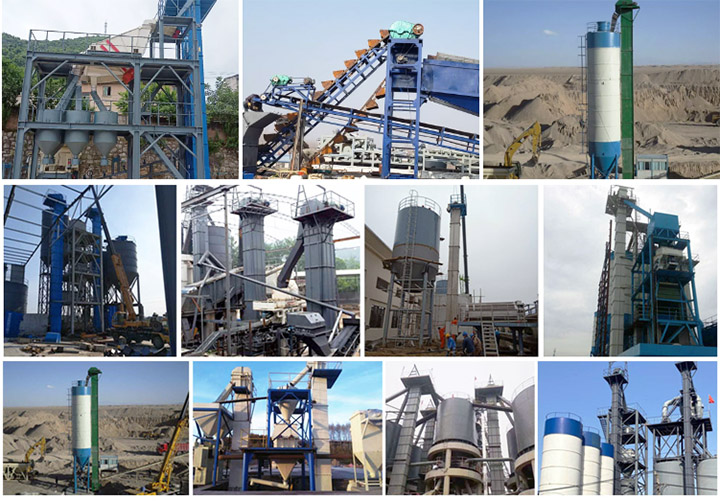
How to choose Dry Mortar Bucket Elevator?
When selecting a dry mortar bucket elevator, consider the following:
Material Characteristics: Assess abrasiveness, moisture content, and particle size to select appropriate bucket material and belt design.
Throughput Requirements: Choose an elevator with sufficient capacity to meet production demands.
Height Constraints: Ensure the system’s lifting height aligns with your facility’s design.
Maintenance Access: Opt for models with easy-access panels for cleaning and maintenance.
Environmental Considerations: Select dust-sealed designs for improved workplace safety and cleanliness.
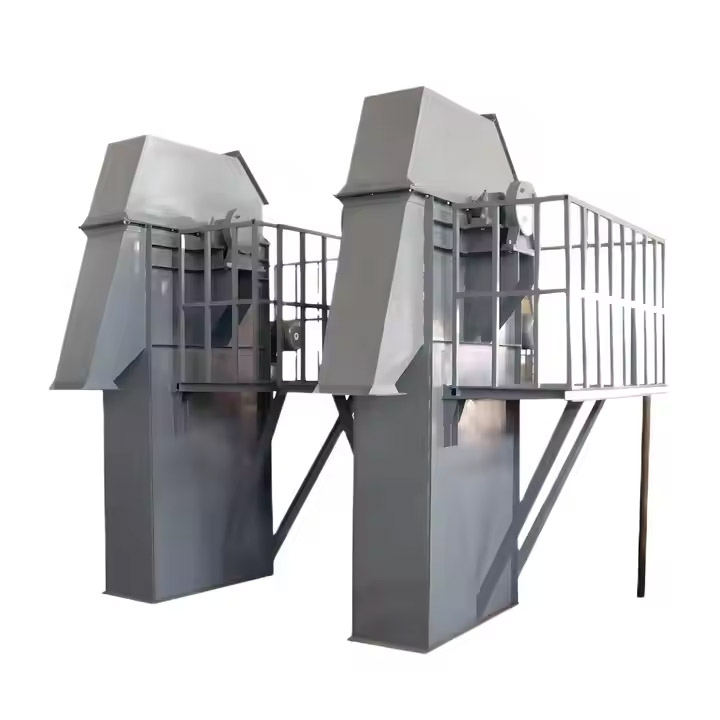
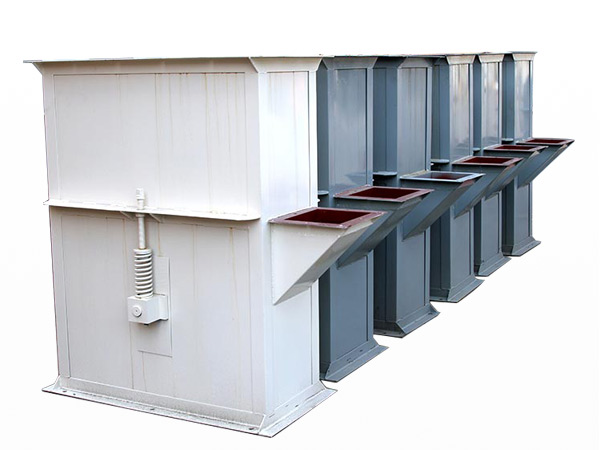
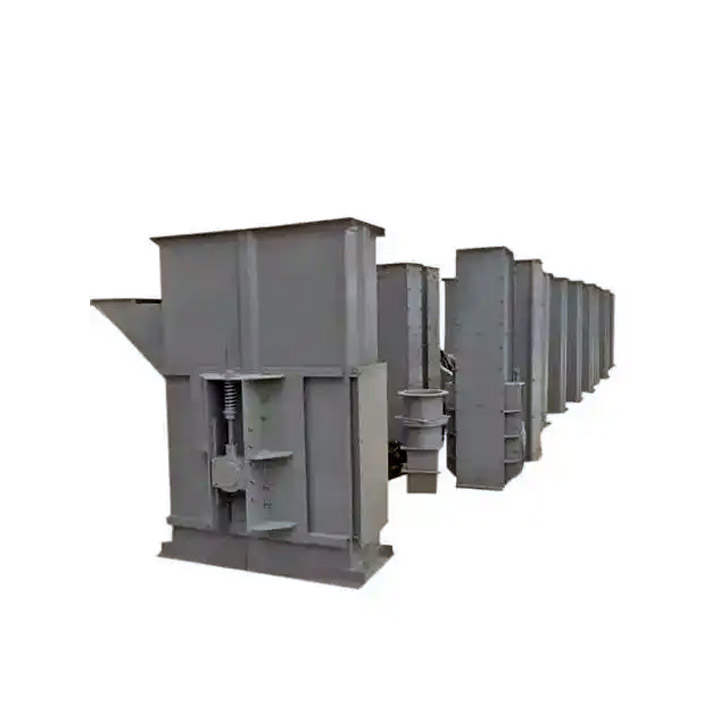 GTD Bucket Elevator
GTD Bucket Elevator